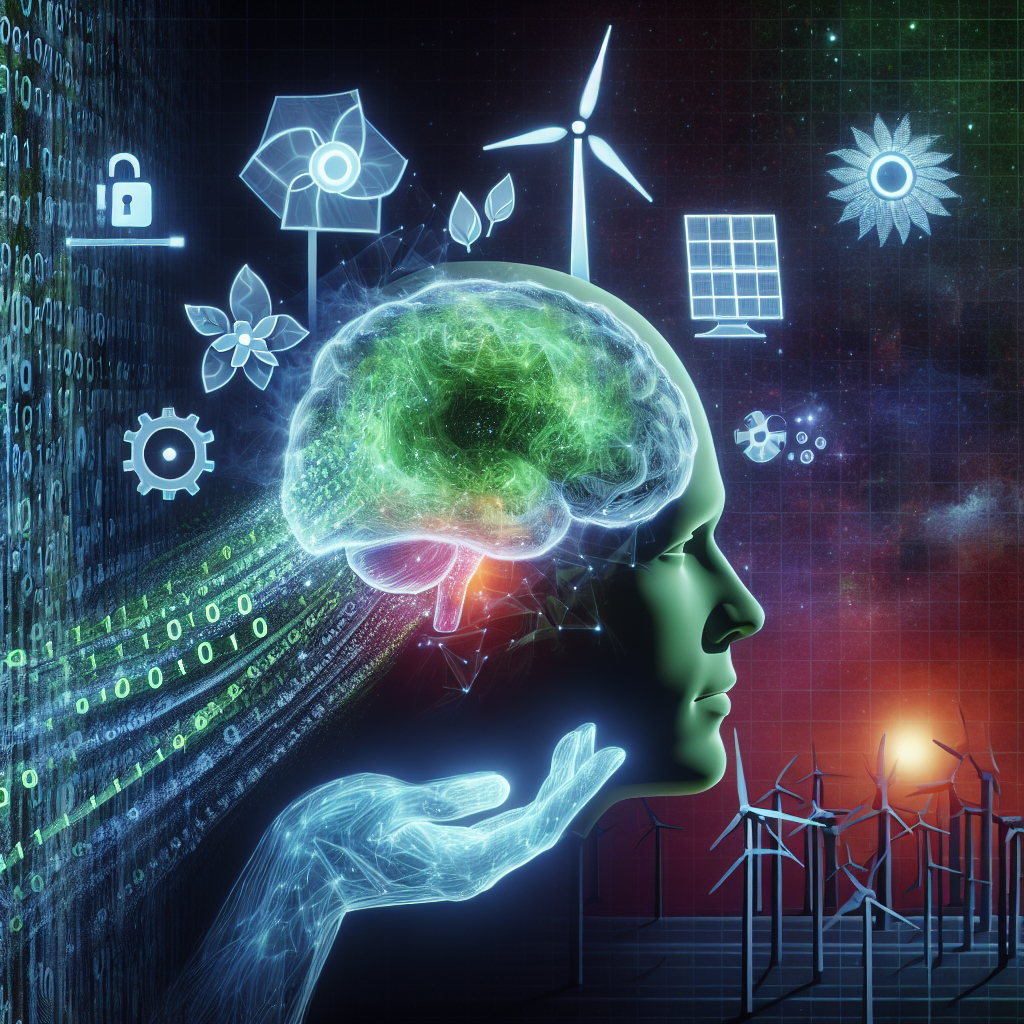In recent years, the intersection of artificial intelligence (AI) and renewable energy has become increasingly important as the world looks for more sustainable and efficient ways to power our lives. AI technologies have the potential to transform the way we generate, distribute, and consume energy, leading to a cleaner and more sustainable future.
One of the key areas where AI is making a significant impact on renewable energy is in the optimization of energy systems. AI algorithms can analyze vast amounts of data in real-time to optimize the performance of renewable energy sources such as solar panels and wind turbines. By using AI, we can improve the efficiency of these systems, reduce downtime, and maximize energy output.
AI is also being used to predict energy demand and optimize energy storage systems. By analyzing historical data and patterns, AI algorithms can accurately predict when and where energy demand will be highest, allowing for better planning and management of renewable energy resources. This can help to reduce energy wastage and ensure a more stable and reliable energy supply.
Another important application of AI in renewable energy is in the development of smart grids. Smart grids use AI algorithms to optimize the flow of energy across the grid, balancing supply and demand in real-time. This can help to reduce energy losses, improve grid stability, and integrate more renewable energy sources into the grid. By using AI to manage the grid, we can create a more flexible and resilient energy system that can adapt to changing conditions and optimize energy distribution.
AI is also being used to enhance the efficiency of renewable energy generation technologies. For example, AI algorithms can optimize the positioning of solar panels and wind turbines to maximize energy capture. By using AI to fine-tune the design and operation of these systems, we can increase their energy output and reduce costs.
In addition to optimizing energy systems, AI is also being used to improve the monitoring and maintenance of renewable energy infrastructure. For example, drones equipped with AI algorithms can inspect solar panels and wind turbines for damage or defects, allowing for early detection and repair. This can help to reduce downtime and extend the lifespan of renewable energy systems.
Overall, the intersection of AI and renewable energy holds great promise for a more sustainable and efficient energy future. By harnessing the power of AI, we can optimize energy systems, predict energy demand, develop smart grids, enhance energy generation technologies, and improve the monitoring and maintenance of renewable energy infrastructure. This can help to accelerate the transition to a cleaner and more sustainable energy system, reducing carbon emissions and mitigating the impacts of climate change.
FAQs:
Q: How is AI being used to optimize energy systems?
A: AI algorithms can analyze vast amounts of data in real-time to optimize the performance of renewable energy sources such as solar panels and wind turbines. By using AI, we can improve the efficiency of these systems, reduce downtime, and maximize energy output.
Q: How is AI being used to predict energy demand?
A: AI algorithms can analyze historical data and patterns to accurately predict when and where energy demand will be highest. This allows for better planning and management of renewable energy resources, reducing energy wastage and ensuring a more stable and reliable energy supply.
Q: How is AI being used to develop smart grids?
A: Smart grids use AI algorithms to optimize the flow of energy across the grid, balancing supply and demand in real-time. This can help to reduce energy losses, improve grid stability, and integrate more renewable energy sources into the grid.
Q: How is AI being used to enhance the efficiency of renewable energy generation technologies?
A: AI algorithms can optimize the positioning of solar panels and wind turbines to maximize energy capture. By using AI to fine-tune the design and operation of these systems, we can increase their energy output and reduce costs.
Q: How is AI being used to improve the monitoring and maintenance of renewable energy infrastructure?
A: Drones equipped with AI algorithms can inspect solar panels and wind turbines for damage or defects, allowing for early detection and repair. This can help to reduce downtime and extend the lifespan of renewable energy systems.
In conclusion, the intersection of AI and renewable energy has the potential to revolutionize the way we generate, distribute, and consume energy. By harnessing the power of AI, we can create a more sustainable and efficient energy system that can help to address the challenges of climate change and build a cleaner and greener future for generations to come.

